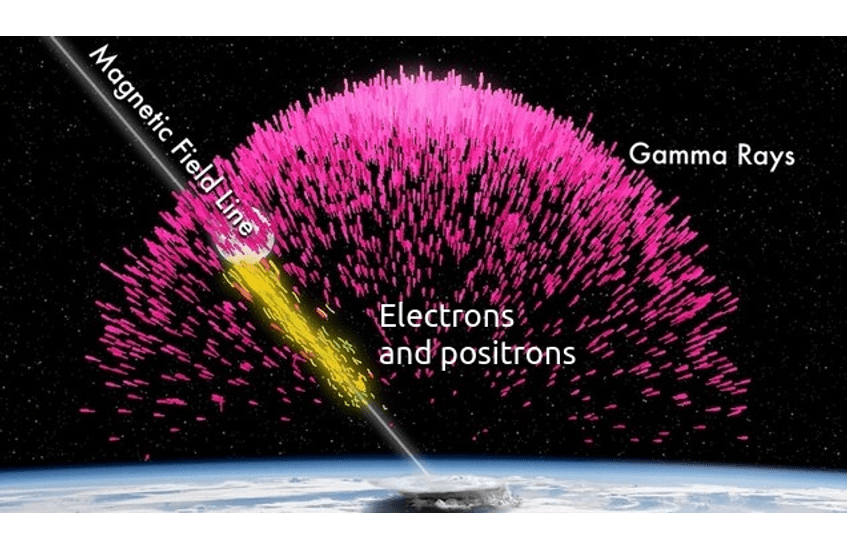ILLUSTRATION COURTESY J. DWYER/FIT, NASA
Terrestrial Gamma ray Flashes (TGF), originating from thunderstorms, are the highest energy natural particle acceleration phenomena occurring on Earth. The production mechanism of TGFs is not well understood. When interacting with the atmosphere, TGFs produce secondary electrons and positrons, and a part gets bounded to Earth’s magnetic field lines, and travels large distances in space. They can be detected by instruments on-board satellites located at the right place (in a window of about 40 km) at the right time (in a window of a few milliseconds). This phenomenon is called a Terrestrial Electron Beam (TEB).
In a new paper by Sarria et al. [2021], observations by the Atmosphere-Space Interactions Monitor (ASIM) are used to study a TEB and retrieving information about the TGF that produced it.
“In this article, we present the first TEB originating from a tropical cyclone and with the lowest energies ever recorded, down to 50 keV” says David Sarria, lead author of the exciting study. He adds: “We also provide a method to infer properties of the energy distribution of the source TGF (producing the TEB) based on the energy spectrum of the TEB”.
Applied to this event, Sarria explains that only TGF energy spectra among the most energetic that were proposed are compatible: “Even more energetic events cannot be excluded”, says Sarria.

Figure 1: Map of of the event, showing the position of the ISS (about 400 km altitude), the southern footprint of the magnetic field line (M) and the lightning stroke (V, about 12 km altitude) linked to the production of the TEB. The stroke happened in the rainbands of the tropical cyclone Johanina seen on the south-eastern part of the map.

Figure 2: Energy spectrum of the Terrestrial Electron beam, as recorded by ASIM. It is the first time it is recorded down to 50 keV. Modeling results are in agreement with the observation. The bump at 511 keV is is a signature of positions (annihilating on the detector), representing about 12 % of the beam.




